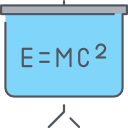
Opacity in Financial Markets
This paper studies the implications of opacity in financial markets for investor behavior, asset prices, and welfare. Transparent funds (e.g. mutual funds) and opaque funds (e.g. hedge funds) trade transparent assets (e.g. plain-vanilla products) and opaque assets (e.g. structured products). Investors can observe neither opaque funds' portfolios nor opaque assets' payoffs. Consistent with empirical observations, an "opacity price premium" arises: opaque assets trade at a premium over transparent ones despite identical payoffs. This accompanies endogenous market segmentation: transparent (opaque) funds trade only transparent (opaque) assets. The opacity price premium incentivizes financial engineers to render transparent assets opaque deliberately.
Ketersediaan
| Call Number | Location | Available |
|---|---|---|
| RFS2712 | PSB lt.dasar - Pascasarjana | 1 |
Informasi Detail
- Judul Seri
-
The Review of Financial Studies
- No. Panggil
-
RFS2712
- Penerbit
- Oxford : Oxford University Press., 2014
- Deskripsi Fisik
-
p. 3502
- Bahasa
-
English
- ISBN/ISSN
-
1465-7368
- Klasifikasi
-
NONE
- Tipe Isi
-
text
- Tipe Media
-
-
- Tipe Pembawa
-
-
- Edisi
-
Vol. 27, Number 12, Dec. 2014
- Subjek
- Info Detail Spesifik
-
The Review of Financial Studies
- Pernyataan Tanggungjawab
-
Yuki Sato
Versi lain/terkait
Tidak tersedia versi lain
Lampiran Berkas
Komentar
Anda harus masuk sebelum memberikan komentar
 Karya Umum
Karya Umum  Filsafat
Filsafat  Agama
Agama  Ilmu-ilmu Sosial
Ilmu-ilmu Sosial  Bahasa
Bahasa  Ilmu-ilmu Murni
Ilmu-ilmu Murni  Ilmu-ilmu Terapan
Ilmu-ilmu Terapan  Kesenian, Hiburan, dan Olahraga
Kesenian, Hiburan, dan Olahraga  Kesusastraan
Kesusastraan  Geografi dan Sejarah
Geografi dan Sejarah